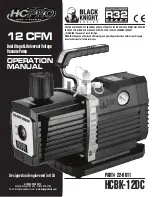
• 54 •
Installation manual /
eCOMFORT-MIL160E-0720 / 07/2020
3.4.- WATER ANALYSIS
The water must be analysed; the water circuit installed must include all items necessary for treaent of the water: filters,
additives, intermediate exchangers, bleed valves, vents, isolating valves etc... depending on the results of the water analysis.
We do not advise operation of the units with open loops which can cause problems with oxygenation, or operation
with untreated ground water.
Use of untreated or improperly treated water can cause deposits of scale, algae and sludge or cause corrosion and erosion. It
is advisable to call in a qualified water treaent specialist to determine what kind of treaent will be necessary. The manufacturer
cannot accept liability for damage caused by the use of untreated or improperly treated water, salt water or brine.
Here are our non exhaustive recommendations given as an indication:
•
No NH4+ ammonium ions in the water, they are very detrimental for copper. <10mg/l
•
Cl- Chloride ions are detrimental for copper with a risk of perforations by corrosion by puncture. < 10 mg/l.
•
SO42- sulphate ions can cause perforating corrosion.< 30 mg/l.
•
No fluoride ions (<0.1 mg/l).
•
No Fe2+ and Fe3+ ions with dissolved oxygen. Dissolved iron < 5 mg/l with dissolved oxygen < 5 mg/l. Over those
values, it means a corrosion of steel which may generate a corrosion of copper parts under deposite of Fe – this is
mainly the case with shell and tube heat exchangers.
•
Dissolved silicon: silicon is an acid element of water and can also lead to corrosion risks. Content < 1mg/l.
•
Water hardness: TH >2.8 K. Values between 10 and 25 can be recommended. This will facilitate scale deposit that can
limit corrosion of copper. TH values that are too high can cause piping blockage over time.
•
TAC< 100.
•
Dissolved oxygen: Any sudden change in water oxygenation conditions must be avoided. It is as detrimental to
deoxygenate the water by mixing it with inert gas as it is to over-oxygenate it by mixing it with pure oxygen. The
disturbance of the oxygenation conditions encourages destabilisation of copper hydroxides and enlargement of particles.
•
Specific resistance – electric conductivity: the higher the specific resistance, the slower the corrosion tendency. Values
above 3000 Ohm/cm are desirable. A neutral environment favours maximum specific resistance values. For electric
conductivity values in the order of 200-6000 S/cm can be recommended.
•
pH: pH neutral at 20°C (7 < pH < 8)
3.- COMMISSIONING AND OPERATION
Summary of Contents for eCOMFORT2
Page 2: ......
Page 67: ...65 Installation manual eCOMFORT MIL160E 0720 07 2020 NOTES...













































